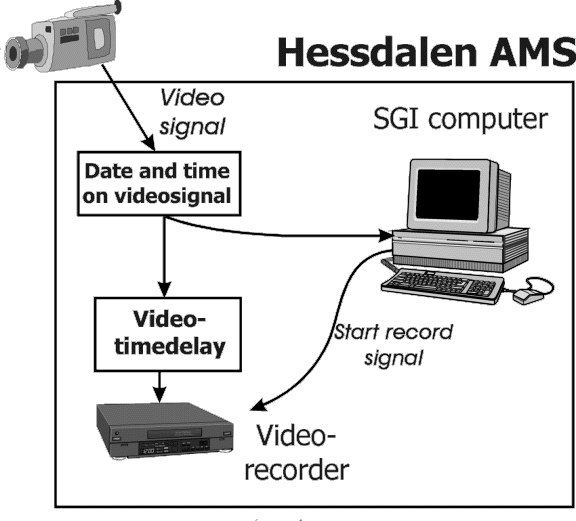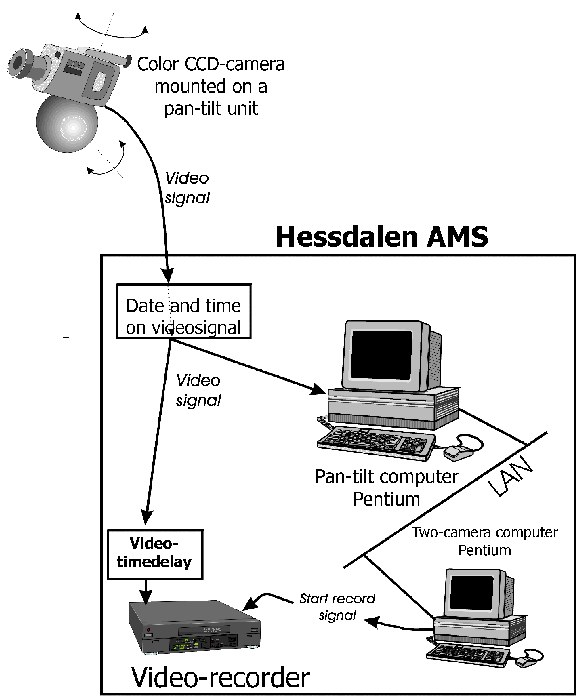The automatic measurement station (AMS) in Hessdalen today, consist of a very simple set of
instrumentation. With an improvement of the instrumentation, more and better data will be achieved.
Step 1
The first step is to put in a delay-unit for the video-signal, that goes from the CCD-camera
to the video-recorder. Today, starting of the video-recorder takes too long time.
The computer use 1 second to compute the picture and the video-recorder use 5 seconds
to start. In most cases this is a too long time. Most of the sightning
is finished after these 6 seconds. With a delay-unit of 10 seconds, we could get all sightning
on to the video, and even what is happening 4 seconds before the sighning. This will also
make it easier for us to analyze the picture.
We can set up the system as so that the computer can "see" what is happening
10 seconds before the video-recorder "see" it. The computer can then start the video-recorder before the
signal has come to the recorder. See figure 1.

Fig.1 - The camera system after the first step.
Step 2
The next step is to finish the "two-camera system", and the tracking unit. This work was started
by a studentgroup A-00-01, as part of their final exam,
in the spring of 2000. They did not manage to be finished. Their work is continued by student
Jens-Christian Skibakk this fall.
The two-camera system consist of two black-and-white CCD-cameras connected to one computer
and two video-recorders. This computer will analyse pictures from the two cameras all the
time. It has to see "something" on both cameras simultanously, before it starts the video-recorders.
Then it calculate the direction and distance to the what is saw, and send this information to the
tracking unit. After that does it send the two alarmpictures, distance and direction
on to the Internet.
The first issue of the software will react if a light sudden come into both cameras simultanously, similar
as the existing system does. That system do not react if there should be a daylight sightning coming into the
view of the cameras. The next issue of the software shall react on a daylight-observations as well.

Fig.2 - The two-camera system.
The tracking-unit consist of a color-CCD-camera connected to one computer and one video-recorder.
This color-CCD-camera is mounted on a pan-tilt unit, so that the computer can track the sightning
based on information from the two-camera system. Pictures from this color-CCD-camera
will be sent on to the Internet.

Fig.3 - The tracking system.
The two-camera system will improve the system because there will be
less false alarms. The one-camera system generate too many false alarms.
That is why we had to set the sensivity on the one-camera system to a low level.
Even with a low sensivity it generates many false alarms.
With a low sensivity in the system, we do not get every sightning.
People have reportet sighnings, which is not captured by the station.
We can increase the sensivity with a two-camera system, because we will set the system so that
both camera's have too see the sightning before any video-recorder will start.
Many of the false alarms will then not happen.
| 